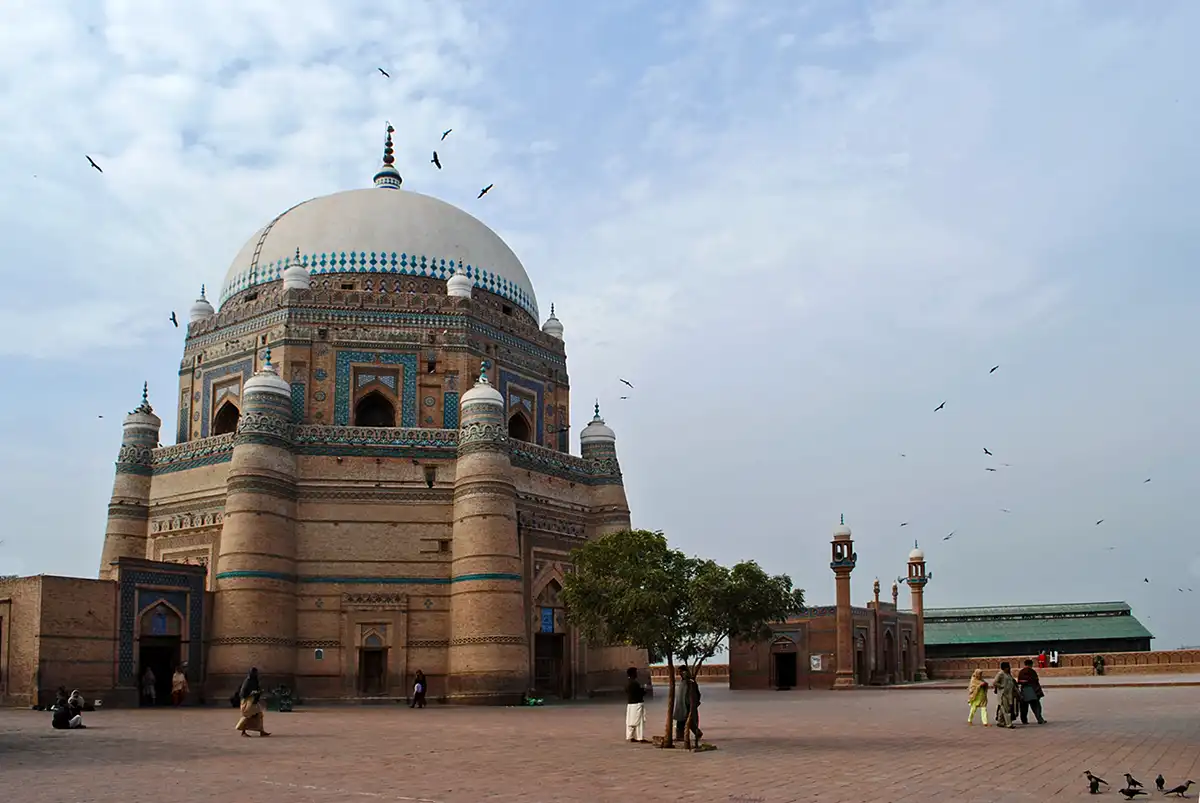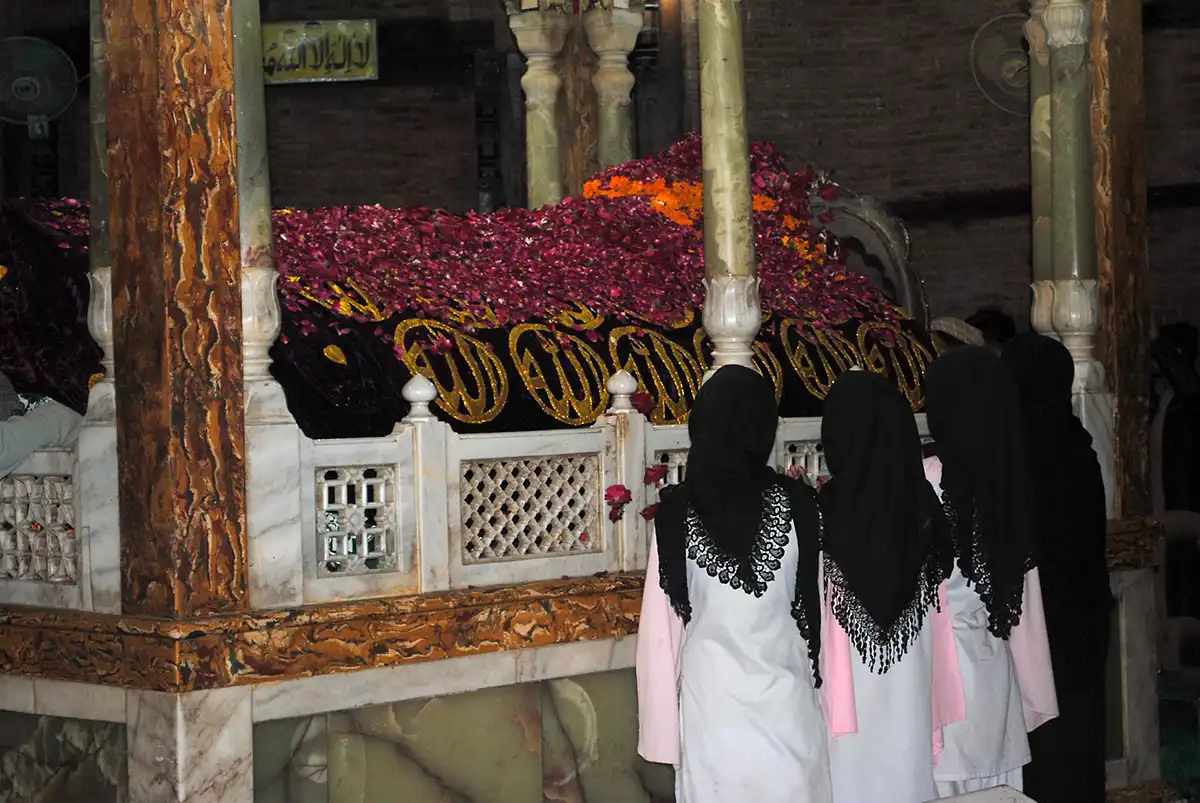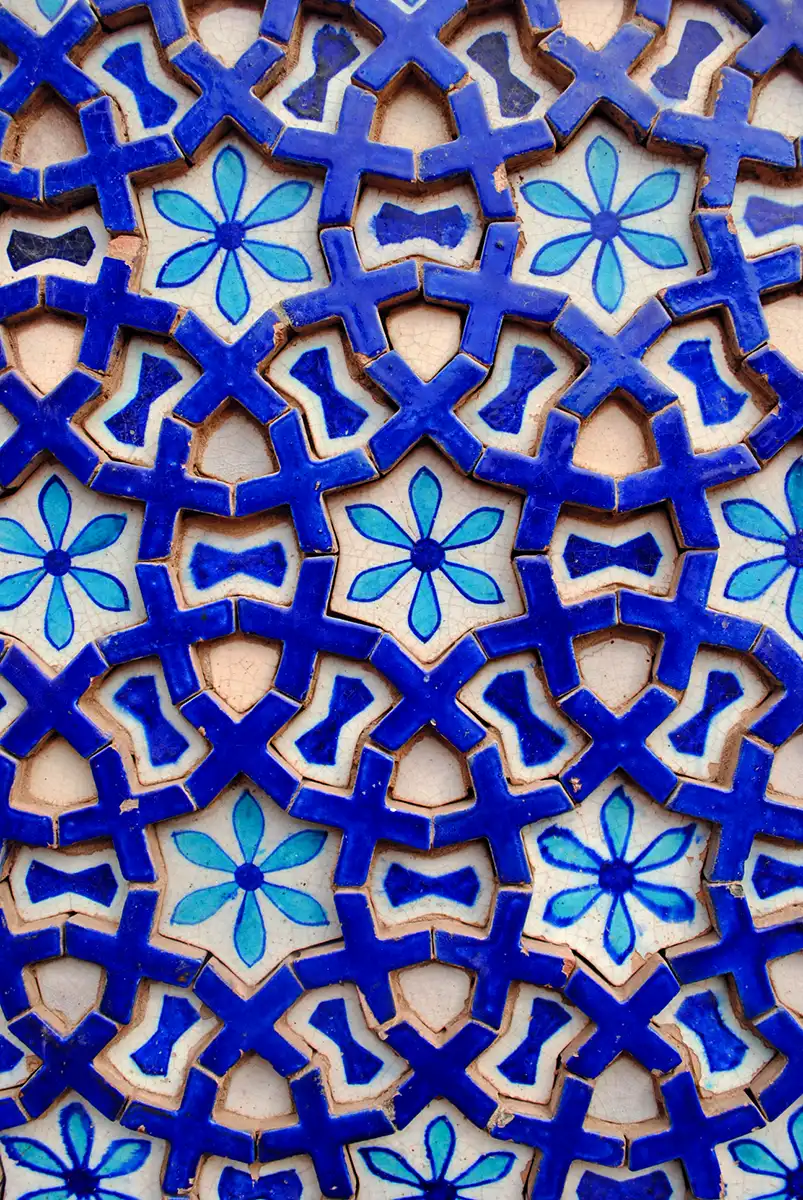Shah Rukn-e-Alam, Multan
Mausoleum of Shah Rukn-e-Alam
Sheikh Rukn-ud-Din Abul Fath (1251 - 1335), commonly known as Rukn-e-Alam (Pillar of the World), was among the eminent Sufi saints from Multan, Pakistan. He was the son of another Sufi sage, Pir Sadar-Al-Din Arif, and was the grandson and successor of Shaikh Baha-Ud-Din Zakariya.
Shaikh Rukn-e-Alam (Rukn-al-Din) was buried in the mausoleum of his grandfather, according to his own will. After some time, however, his coffin was transferred to the present mausoleum, built between 1320 and 1324. The saint is still revered today, and his tomb is the focus of the pilgrimage of over 100,000 pilgrims from all over South Asia who visit and commemorate his memory.
The tomb building is an octagon, 51 feet 9 inches in diameter internally, with walls 41 feet 4 inches high and 13 feet 3 inches thick, supported at the angles by sloping towers. Over this is a smaller octagon 25 feet 8 inches on the exterior side and 26 feet 10 inches high, leaving a narrow passage around the top of the lower story for the Moazzan or public caller to pray. The whole is surmounted by a hemispherical dome of 58 feet external diameter. The total height of the building, including a plinth of 3 feet, is 100 feet. As it stands on the high ground, the total height above the road level is 150 feet. Besides its religious importance, the mausoleum is also of considerable archaeological value as its dome is the second largest in the world, after Gol Gumbaz of Bijapur, India.
The mausoleum is built entirely of red brick, bounded by beams of shisham wood, which have now turned black after so many centuries. The exterior is elaborately ornamented with glazed tile panels, string courses, and battlements. The colors used are dark blue, azure, and white, contrasted with the deep red of the finely polished bricks. The tomb was said to have been built by Ghias-ud-Din Tughlak for himself during the days of his governorship of Depalpur, between 1320 and 1324 AD, but was given by his son, Muhammad bin Tughluq to the descendants of Shah Rukn-e-Alam for the latter’s burial in 1330.
In the 1970s, the Auqaf Department of the Punjab Government thoroughly repaired and renovated the mausoleum. The entire glittering glazed interior results from new tiles and brickwork done by the Kashigars of Multan.
Other shrines in Multan
Mausoleum of Hazrat Bahuddin Zakriya Bad-Shahee Mosque
Mausoleum of Shah Shams Tabriz
Baba Buley Shah
Hazrat Muhammad Shah Yusaf Gardez

Martin Gray is a cultural anthropologist, writer and photographer specializing in the study of pilgrimage traditions and sacred sites around the world. During a 40 year period he has visited more than 2000 pilgrimage places in 160 countries. The World Pilgrimage Guide at sacredsites.com is the most comprehensive source of information on this subject.




